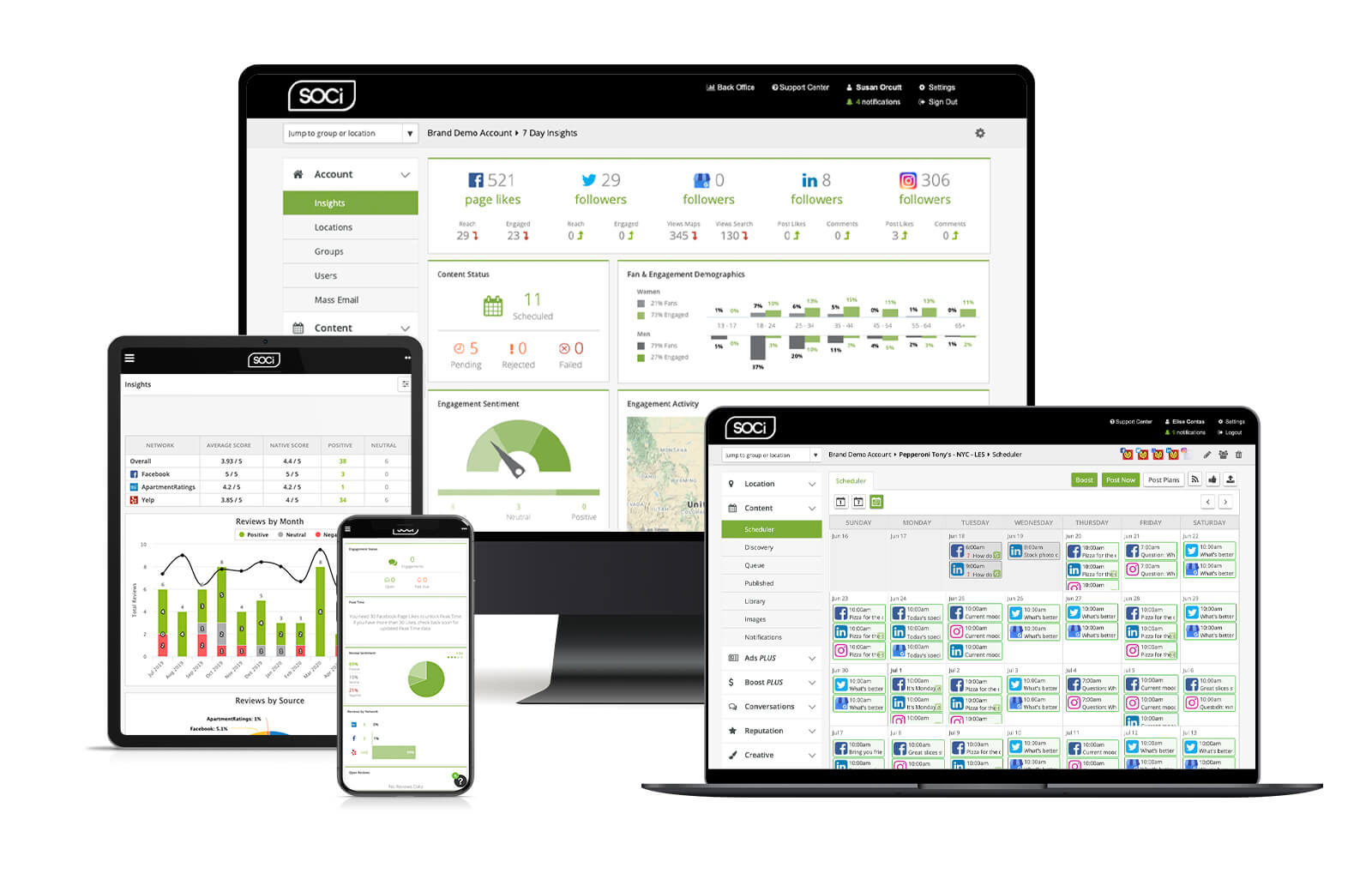Navigating the Future of the Client Experience in Financial Services
How to Develop Effective Buyer Personas to Win Your Target Audience

How to Develop Effective Buyer Personas to Win Your Target Audience
Sixty-one percent of people expect brands to tailor experiences based on their preferences. In today's digital-first world, personalization is a must. As a multi-location marketer, you must understand your target audience's interest and customize the buyer's journey accordingly. This is where buyer personas come in. If you're not already familiar, a buyer persona is a researched-based profile that represents your target audience. Buyer personas showcase who your ideal customer is, what their interests are, and what their day-to-day activities include. Within this blog, we'll break down how to develop effective buyer personas and how your multi-location business can incorporate them into its localized marketing strategies.The Importance of Buyer Personas
Developing buyer personas is an essential step in the marketing process. It's necessary to understand who you're targeting before your multi-location business can create a customized localized marketing strategy. Consumers gravitate towards companies they trust - 88 percent of consumers are more willing to buy from a trusted brand more often, and 82 percent choose a trusted brand over others. Your business can build trust by showing potential buyers that you understand them, hence where buyer personas come in. Now that you know why buyer personas are crucial to your marketing efforts, let's look at building them.How to Determine Buyer Personas for Your Business
There's no one specific formula your business has to follow to develop buyer personas, but you can follow a few guidelines to help. It's also worth noting that your business will likely come up with multiple personas. There's more than one type of buyer.1. Think About Your Business's Target Audience
The first step in developing a buyer persona is to think about your target audience. Getting basic information about them will help you build your persona. Some details to consider include, but are not limited to:- Age
- Gender identity
- Geographic location
- Interests
- Whether or not they have kids
- What type of job they might have
- Communication preferences
2. Consider Your Persona's Motivations and Pain Points
After defining your multi-location business's target audience, it's time to consider your persona's motivation. What would be their reason for purchasing your product or choosing your company? For instance, if you're in the restaurant industry, are diners coming to your restaurant because of its fast service, low prices, or farm-to-table food options? If you're in the retail industry, what motivates consumers to purchase from your business rather than from a competitor? Realizing what differentiates your business from the competition and what motivates people to buy can help inform the development of your persona. The same goes for pain points. Are there any areas where your target audience is struggling, and your business can make their lives easier? For instance, if you’re in the retail industry, do you provide same day delivery or curbside pickup that could help save a working parent time and effort? If a potential customer sees a social media post highlighting that your product or service can solve one of their problems, they'll be more inclined to make a purchase. While your goal shouldn't be to capitalize on pain points, it should be to make people's lives easier, which can be done through understanding their challenges.3. Interview Loyal Customers
Finally, another great way to fully understand your business's buyer personas is to interview people who have already done business with your company. Customers should include similar qualities to the buyer personas your business is creating. Find out what drew these customers to your business. Was it your marketing efforts? Did they like the quality of your products? What connected them to your brand? Understanding this can help you realize what is working in your current marketing strategy and what can be improved. Similarly, it can open your eyes to areas you could have overlooked when developing your buyer personas. While this tactic is a great way to help you confirm your buyer personas are aligned with current customers, it also shows those customers that you care about them, which will help build trust and loyalty.Incorporate Your Buyer Personas Into Marketing Efforts
Once your multi-location business understands what your buyer personas look like and how they vary based on location, you can start incorporating your findings into your localized marketing efforts. For instance, if you found that your target market is 24-30-year-olds who work a 9-5, you can rethink some of your local social efforts. Rather than posting at 10 am during the day, you can test posting at 8 pm when your target audience is likely unwinding and scrolling through their social media. Similarly, your business could begin incorporating Instagram into its local social strategy if you haven't already done so. Check out our Localized Social Content Guide for more tips on creating a standout local social plan. While adjusting various aspects of your marketing tactics is critical, messaging is also important. The content you include in your local search or social content should reflect your buyer personas' interests. If your multi-location business is in the fitness industry and decides that your buyer personas are likely interested in extended hours for group fitness classes, this is something you can promote in both your local search and social efforts. Highlighting that your fitness brand offers classes until 9 pm through your local listings is essential while sharing this information through additional local search and social channels. The more you incorporate your findings into your localized marketing strategy, the better.Ensure Local Teams Are On Board and Crush Your Localized Marketing Efforts
After determining how to incorporate the buyer personas into your marketing efforts, it's essential to make sure both corporate and local teams are on board. Suppose your multi-location business's corporate team was the one to develop buyer personas. In that case, they should share their findings at the local level and explain how local teams can incorporate their findings into marketing efforts. On the other hand, if local teams create their buyer personas, they should share their results with corporate. Making sure everyone is on the same page with buyer personas will ensure that marketing plans are made with these personas in mind.









